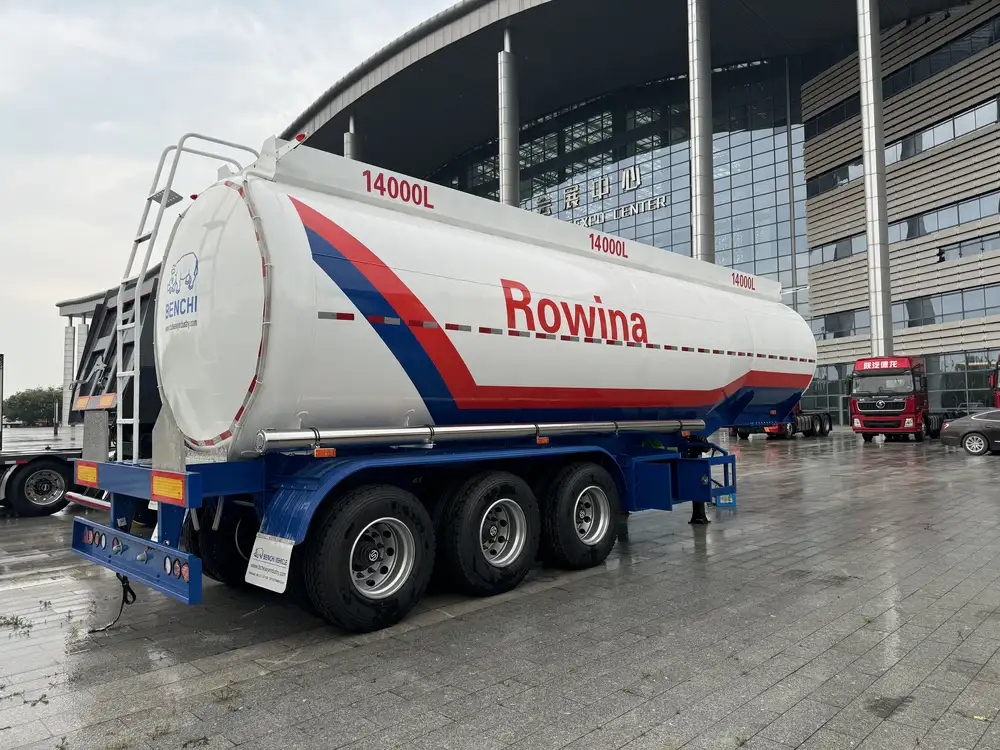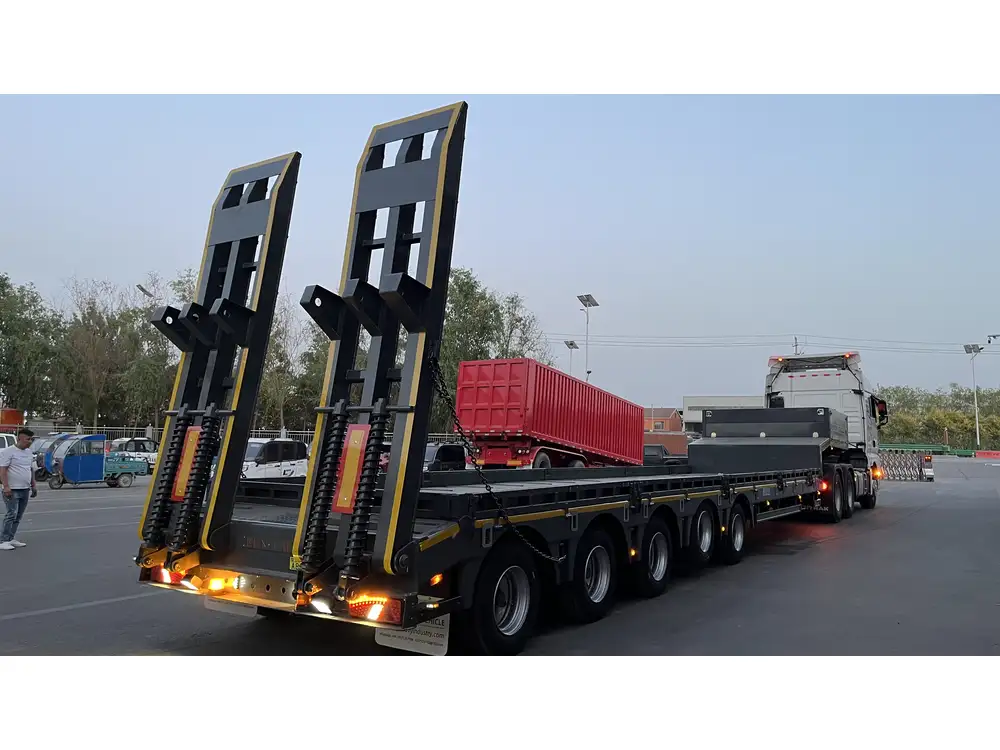For those in the transportation and logistics industry, the specifications of semi-trailer beds are fundamental in determining the suitability of trailers for diverse cargo types. One question frequently posed is, “How wide is a semi-trailer bed?” This article meticulously explores the aspect of semi-trailer widths, the regulations surrounding them, variations in size based on application, and other critical considerations.
The Standard Width of Semi-Trailer Beds
The width of a semi-trailer bed traditionally falls under specific regulations, varying slightly depending on regional laws and the type of cargo.
- Common Widths:
- Standard Width: The most prevalent width for semi-trailer beds is 102 inches (8.5 feet). This width is prevalent in various types of trailers, including flatbeds, reefers, and dry vans.
- Wider Trailers: Some specialized or custom trailers may extend up to 120 inches (10 feet) wide but must adhere to state or province-specific regulations.
| Type of Semi-Trailer | Standard Width | Notes |
|---|---|---|
| Flatbed | 102 inches | Ideal for construction materials, machinery, etc. |
| Refrigerated (Reefer) | 102 inches | Used for transporting perishable goods. |
| Dry Van | 102 inches | Suitable for general freight. |
| Specialized | 120 inches | Typically requires special permits. |
Regulatory Framework Governing Semi-Trailer Widths
The width of semi-trailers is governed by federal, state, and local laws to ensure safety and efficiency on public roadways. Understanding these regulations is crucial for manufacturers, operators, and fleet managers.

Federal Regulations
The Federal Highway Administration (FHWA) stipulates that the maximum width for commercial vehicles in the United States is 102 inches. States may impose stricter regulations, so it’s vital for operators to be aware of local laws.
State Regulations
Different states may have varying allowances. For example:
- California: Generally adheres to the 102-inch maximum but has specific routes where wider loads may travel.
- Texas: Allows wider loads for certain types of vehicles and designated highways.
| State | Maximum Width (inches) | Notes |
|---|---|---|
| California | 102 | Special permits may apply for wider vehicles. |
| Texas | 102 | Allows wider loads on designated routes. |
| Florida | 102 | Consistent with federal regulations. |
| New York | 102 | Additional restrictions on certain roads. |
Variations in Semi-Trailer Bed Width Based on Type
Different uses necessitate variations in semi-trailer specifications. Understanding these variations is essential for selecting the right trailer for specific needs.

1. Flatbed Trailers
Flatbed trailers, with their versatile design, typically feature a width of 102 inches, enabling them to carry oversized cargo safely. The wider bed facilitates loading and unloading from the sides, making it favorable for construction materials and machinery.
2. Refrigerated Trailers
Reefers, designed for temperature-sensitive goods, also conform to the standard 102-inch width. This design strikes a balance between accommodating the necessary insulation and maintaining the structural integrity required for refrigeration.
3. Dry Van Trailers
Dry vans, most associated with general freight, fit into the same width category of 102 inches. Their enclosed structure provides protection from the elements, making them ideal for shipping packaged goods.

4. Specialized Trailers
Some trailers, like lowboys or extendable flatbeds, can exceed the standard width but necessitate special permits. The size is often determined by the cargo needing transport—this should be carefully considered when assessing width options.
Considerations When Choosing a Semi-Trailer Width
Selecting the right semi-trailer involves not only understanding the standard measurements but also considering other factors that can impact efficiency and legality.
A. Load Type
- Heavy Loads: If transporting heavy machinery, consider the benefits of a wider trailer bed to enhance stability.
- Bulk Goods: Materials needing bulk transport may also dictate specific dimensions.

B. Route Restrictions
Operating in states or regions with stringent roadway regulations calls for careful planning to ensure the selected trailer will comply without requiring excessive permitting.
C. Equipment Compatibility
The loading and unloading equipment must align with trailer width. Wider trailers might require specialized equipment or loading docks, influencing decision-making.
D. Traction and Stability
Wider beds tend to distribute weight more evenly, contributing to better traction and stability, particularly important in adverse weather.

Impact of Width on Maneuverability and Performance
While width can enhance load capacity, it also impacts a trailer’s maneuverability. Wider trailers may struggle in tight spaces, especially in urban environments or loading docks with limited space. Hence, the width of a semi-trailer bed must be aligned with where it will primarily operate.
- Tight Turns: Wider trailers may need additional turning radius, which can complicate navigation in urban settings.
- Weight Distribution: As width increases, so does the potential for a greater weight distribution, crucial for heavy loads.
- Safety Considerations: Wider loads can pose safety risks during transit, prompting the need for careful checking when climbing grades or engaging with overhead structures.
| Factor | Narrow Trailers | Wide Trailers |
|---|---|---|
| Maneuverability | Easier in tight spaces | Harder; less flexible |
| Load Capacity | Limited | Higher |
| Stability | Moderate | Enhanced |
| Weight Distribution | Less optimal | More balanced |
Conclusion: Making Informed Choices About Semi-Trailer Widths
In the complex world of freight transportation, understanding how wide a semi-trailer bed can be is essential for optimizing operations. The standard of 102 inches proves to be the most adaptable for multiple types of trailers, though specialized wider trailers are available where legislation permits.
By considering various factors—such as load requirements, route restrictions, and the interplay between width and maneuverability—transportation professionals can make educated decisions that enhance their operational efficiency. Whether it’s a decision around flatbeds, reefers, dry vans, or specialized trailers, being well-versed in the nuances of semi-trailer bed dimensions is critical.
Through careful consideration of trailer specifications, compliance with regulatory frameworks, and alignment with operational needs, businesses can successfully navigate the logistics landscape, ensuring they are well-equipped to meet customer demands and thrive in the transportation sector.



